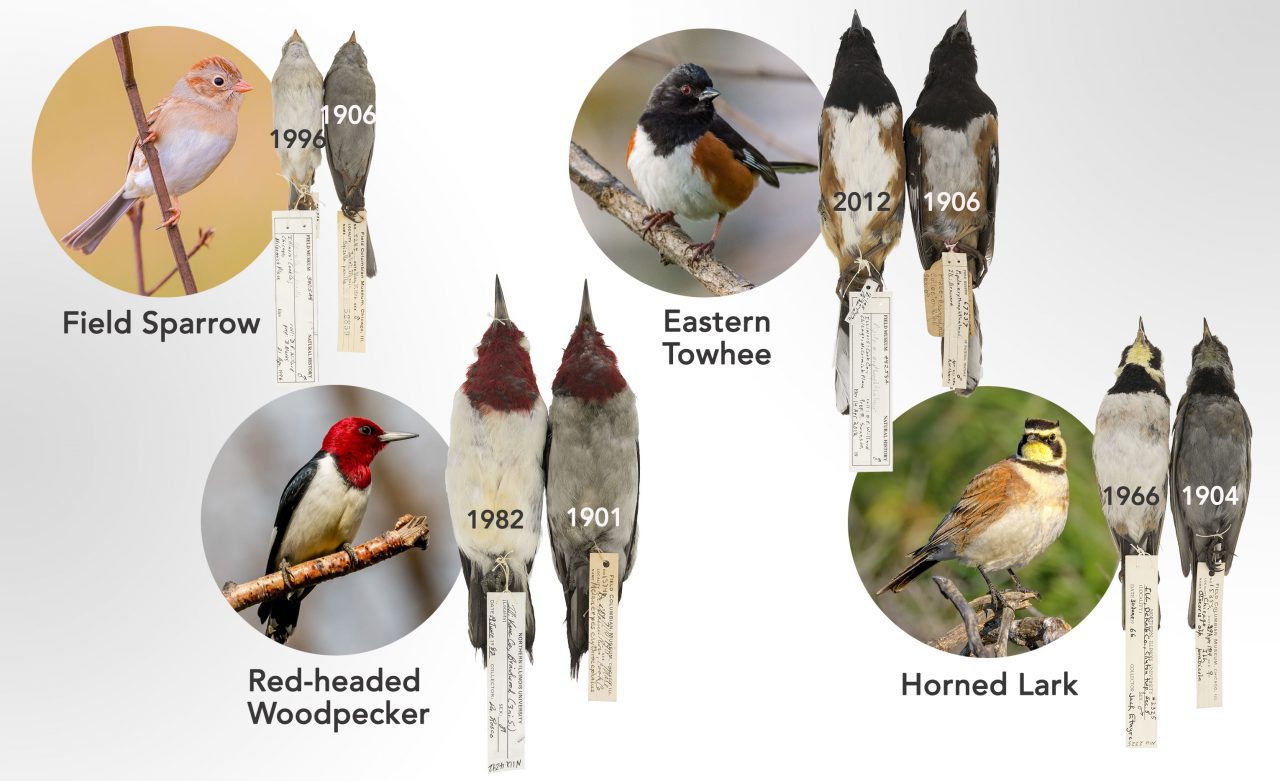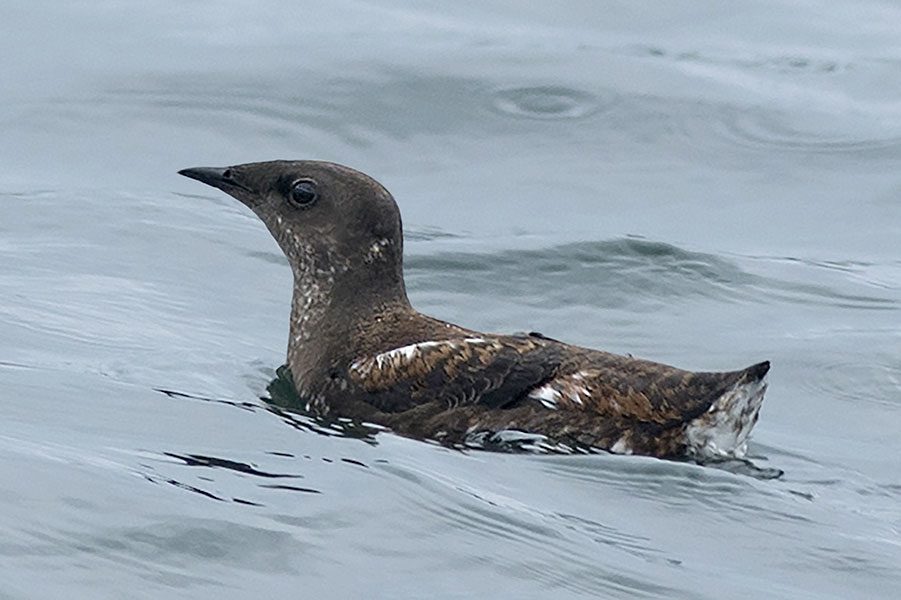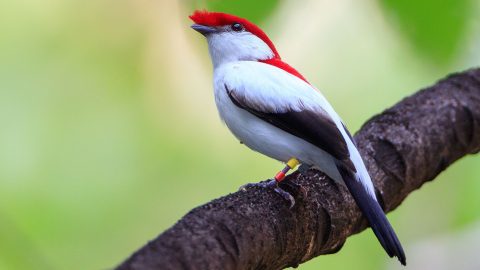From Museum Drawers, Scientists Uncover Our Sooty Past
By Kathi Borgmann
Sooty air in Joliet, Illinois, 1901; photo from the Library of Congress, LC-D4-5935. April 2, 2018From the Spring 2018 issue of Living Bird magazine. Subscribe now.
So an art historian and an ornithologist walk into a museum…
It sounds like the setup for a punchline, but when Carl Fuldner and Shane DuBay went looking through the specimens in the underground archives of Chicago’s Field Museum of Natural History, what they uncovered was not a joke. Instead they saw something that made them gasp—Horned Larks and Red-headed Woodpeckers with dirty, gray bellies.
Typically these species’ bellies are white, but these particular birds were collected in the Midwest in the early 1900s, around the time of the Second Industrial Revolution.
“Could it really be particulate matter from the atmosphere during the time when the bird was alive?” wondered DuBay.
Fuldner, an art historian, first contacted DuBay, an ornithologist, to get his opinion on bird photographs taken in the late 1890s. Both are graduate students at the University of Chicago. DuBay thought it would be fun to take Fuldner into the museum to show him a few birds from the time period when the photos were taken. That’s when they first saw the strange gray-bellied birds.
After inspecting thousands of birds from collections across the manufacturing belt from Wisconsin to Pennsylvania, Fuldner and DuBay published their findings in the journal Proceedings of the National Academy of Sciences. Newspapers nationwide picked up on the headline news from their paper—birds collected in the early 20th century held signs that our air was so dirty that even birds’ feathers turned gray. More shockingly, the amount of black carbon or soot accumulated on birds’ feathers from 1880 to 2015 told a story of burning coal and environmental policy in the United States.
For example, from the late 1880s to the 1930s, coal consumption increased and the amount of soot found on specimens remained high. But specimens from the Great Depression, a period when manufacturing slowed, had less soot on their feathers. Another drop in soot appeared during the second half of the 20th century, when there was less black carbon in the air due to regulations limiting the domestic use of soft bituminous coal, and because cities shifted to cleaner-burning fuels and centralized power plants. Although coal consumption continued to increase in the United States, black carbon emissions decreased as a result of shifting away from dirty coal, giving us cleaner skies—and white-bellied birds. Since then, the Clean Air Act, passed in 1963, has helped maintain clear skies.
“What’s so exciting,” says Fuldner, “is that you can see to some extent what approaches were effective in a way that we’ve never been able to see before.”
DuBay and Fuldner were able to link annual coal consumption with the amount of soot on the feathers thanks, in part, to bird biology; birds grow a new set of feathers every year.
“Molt provides opportunities to understand the scheduling of events in a bird’s life,” says Vanya Rowher, curator of birds and mammals at the Cornell University Museum of Vertebrates. Fuldner says that new feather growth made it possible “to reconstruct the historical environment from the given year in which the bird was collected, as opposed to the bird accumulating soot and particulate on its feathers through its entire lifetime.”

A Snapshot in Time
Naturalists and collectors in the early 20th century thought of the dirty feathers as a nuisance. But, says Rowher, that’s the beauty of collections. One hundred years ago nobody had any idea these specimens could be used for studying air quality. Preserved specimens allow researchers to address questions that were never even thought of when the bird was collected.
Museum collections offer scientists the opportunity to go where field studies can’t—the opportunity to time-travel back into past centuries to study their subjects. Rowher says that studying birds across large geographic areas or spans of decades is extremely hard to do without the vast amounts of historical data that exist in museums.
“What are you going to do, just wait 100 years?” Rowher asks.
He also says there’s a lot more waiting to be uncovered in museum specimens.

“DuBay and Fuldner’s study showcases just the stuff you can see on specimens, but with the new technologies like stable isotopes you can reconstruct the diets of birds from the 1900s,” says Rowher. “That’s pretty powerful for understanding how diets changed through time.”
For example, in 2016 Benjamin Becker and Steven Beissinger from the University of California, Berkeley, used stable isotope comparisons to reconstruct the diet of the Marbled Murrelet, a now-endangered seabird. They wanted to know if somehow a change in their diet might be contributing to their decline.
Becker and Beissinger compared stable isotope signatures in feathers from specimens collected from 1895 to 1911 to isotope signatures left on the feathers of modern birds. In the early 20th century, murrelets were feeding on sardines, a high-energy resource. But as the fisheries industry started harvesting more and more sardines, murrelets had to forage lower on the food chain for prey such as krill, which aren’t as nutritious. The diet of Marbled Murrelets shifted, and their feathers silently recorded the change. The research suggested that foraging lower on the food chain may have contributed to the Marbled Murrelet’s decline.
Both the murrelet and the sooty-birds studies bring old specimens back to life. DuBay says the specimens in his study are “a visual connection, linking the birds back to the really smoky, sooty skies that the birds were flying through.”
DuBay’s and Fuldner’s research was published on October 9, the same day that Environmental Protection Agency Administrator Scott Pruitt announced the repeal of the Obama administration’s Clean Power Plan to reduce greenhouse gas emissions from power plants. DuBay says that’s a poignant coincidence.
“The birds in our study that are the dirtiest are from a period when there were limited regulations,” says DuBay. “That, in and of itself, should say something.”

All About Birds
is a free resource
Available for everyone,
funded by donors like you
American Kestrel by Blair Dudeck / Macaulay Library



